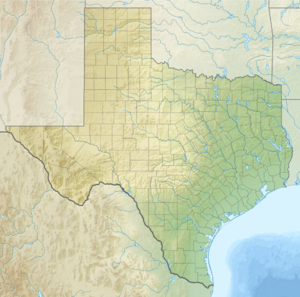This article needs additional citations for verification. (November 2022) |
This article includes a list of references, related reading, or external links, but its sources remain unclear because it lacks inline citations. (July 2023) |
| Battle of Pease River/Pease River Massacre | |||||||
|---|---|---|---|---|---|---|---|
| Part of the American Indian Wars | |||||||
| |||||||
| Belligerents | |||||||
|
| Comanche Noconi Band | ||||||
| Commanders and leaders | |||||||
| Lawrence Sullivan "Sul" Ross | Peta Nocona* [note 1](disputed) | ||||||
| Strength | |||||||
| 60 men |
Unknown at least 20 in the band, including 16 unarmed Comanche women and 2 children | ||||||
| Casualties and losses | |||||||
| 3 reported. | All but three killed; Naduah, or Cynthia Ann Parker, was captured with her infant daughter, Topʉsana (Prairie Flower) | ||||||
Location within Texas | |||||||

The Battle of Pease River, also known as the Pease River Massacre[1] or the Pease River fight,[2] occurred on December 19, 1860, near present-day Margaret, Texas in Foard County, Texas, United States. The town is located between Crowell and Vernon within sight of the Medicine Mounds just outside present-day Quanah, Texas.
A monument marks the site where a group of Comanche Indians were massacred[2][3][4][5] by a detachment of Texas Rangers and militia under Ranger Captain "Sul" Ross. The Indian camp was attacked as retaliation against recent Comanche attacks on settlers.
This raid is primarily remembered as the place where Cynthia Ann Parker was recovered after she had been captured in the Fort Parker massacre, 24 years earlier.
Cite error: There are <ref group=note> tags on this page, but the references will not show without a {{reflist|group=note}} template (see the help page).
- ^ Jones, Caroline (May 19, 2017). "On This Day in 1836: Cynthia Ann Parker is captured in a Comanche Raid". Texas State Library Archives Commission. Retrieved July 11, 2023.
- ^ a b Stratton, W.K. (December 15, 2020). "What Happened at Pease River Wasn't a Battle. It Was a Massacre". Texas Monthly. Archived from the original on December 15, 2020. Retrieved July 3, 2023.
- ^ Carlson, Paul H., Crum, T. (2012)
- ^ "Massacre at Comanche village at Pease River (Texas)". Native Americans in Philanthropy. Retrieved July 6, 2023.
- ^ "Texas A&M University Department of History Faculty on the Institutional History of Lawrence Sullivan Ross" (PDF). Texas A&M University Faculty Senate. June 15, 2020.

